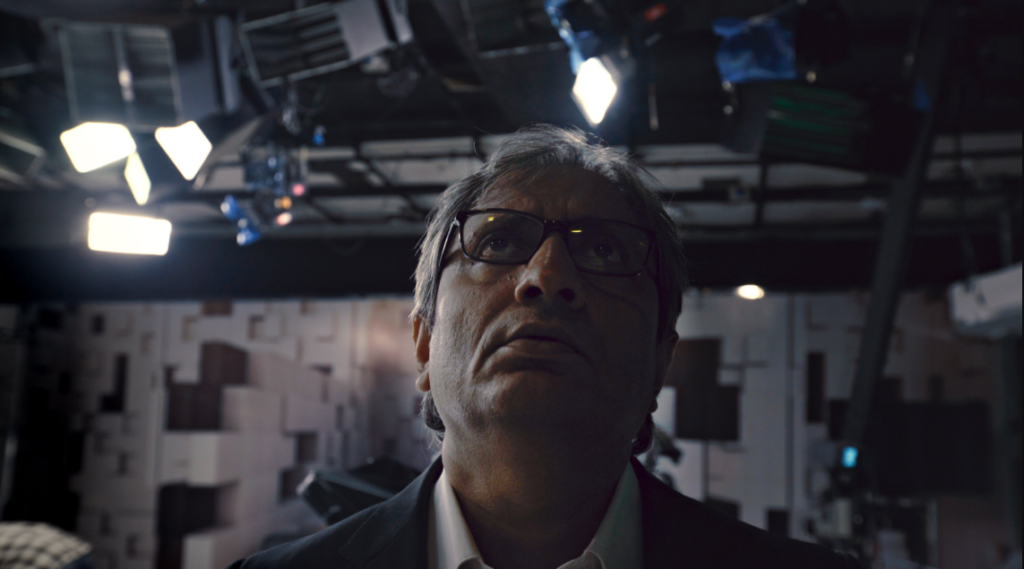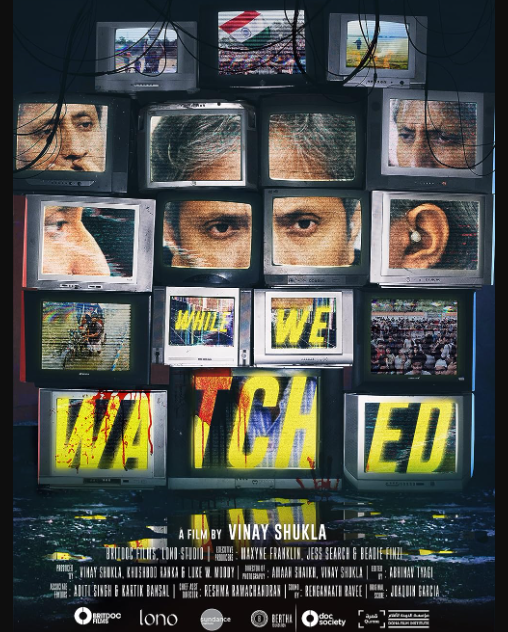In the realm of documentaries, few names shine as brightly as Ravish Kumar’s. The renowned Indian journalist and news anchor has earned accolades for his incisive reporting and fearless journalism. However, despite his prominence, Kumar’s documentary “While We Watch” has faced significant challenges in finding a place on online platforms or cinema screens. Let’s delve into the factors that have contributed to this situation.
Content and Controversy around Ravish Kumar
“While We Watch” is not Ravish Kumar’s typical documentary. It tackles politically sensitive and controversial subjects, delving into issues that are often seen as polarizing. While this kind of content can be compelling and thought-provoking, it can also raise concerns among distributors and platforms about potential backlash, legal challenges, or political pressure.

1. Censorship Concerns: Documentaries that address politically sensitive topics may face censorship or legal hurdles in some regions. Distributors and platforms may be wary of potential legal battles or government restrictions that could arise from hosting such content.
2. Audience Reception: Controversial content can sometimes alienate audiences, leading to concerns about viewership numbers and the potential for negative reactions. Platforms may prefer content with broader appeal to maximize their audience base.
Limited Availability
Securing a spot on an online platform or in cinema halls is highly competitive. While Ravish Kumar’s documentary undoubtedly possesses journalistic merit, it faces challenges common to many independent productions.
1. Distribution Networks: Independent documentaries may struggle to secure distribution agreements with major platforms or theater chains. These distribution networks are often dominated by larger studios and established filmmakers.

2. Marketing and Promotion: Effective marketing and promotion are essential for any film’s success. Independent documentaries may have limited budgets for advertising and may struggle to generate the buzz needed for a wide release.
3. Festival Exposure: Film festivals can be a launchpad for documentaries, but not all films have the opportunity to premiere at prestigious events. A festival debut can significantly impact a documentary’s chances of securing distribution.
Streaming and Content Diversity
The rise of streaming platforms has revolutionized the way we consume media. However, these platforms have finite space and must carefully curate their content libraries to cater to diverse tastes and interests.
1. Content Diversity: Streaming platforms aim to offer a wide range of content to attract a broad audience. While documentaries hold a valuable place in their libraries, platforms must strike a balance between various genres and subjects.

2. Viewer Preferences: Viewer preferences play a crucial role in content selection. Streaming platforms use algorithms and user data to recommend content that aligns with individual tastes, making it challenging for lesser-known documentaries to surface.
The Role of Alternative Distribution
While securing a spot on mainstream platforms or in cinema halls may be challenging, alternative distribution methods exist. Independent documentaries often find success through film festivals, special screenings, or niche streaming services catering to specific genres or audiences. These avenues can provide the exposure needed to reach their intended viewers.
In the case of “While We Watch,” its potential audience may be better served by exploring alternative distribution methods that align with the documentary’s themes and intended impact. In today’s digital age, opportunities for sharing thought-provoking content have expanded beyond traditional platforms, offering filmmakers new avenues to reach and engage their audience.
The Importance of Alternative Platforms
While it may face challenges on mainstream online platforms and in cinema halls, “While We Watch” and documentaries of its kind should not be discouraged. Alternative platforms and distribution methods can be a powerful means to reach a dedicated and engaged audience.
1. Film Festivals: Film festivals specializing in documentary films provide a unique platform for independent filmmakers. These events not only showcase documentaries but also connect filmmakers with like-minded audiences and potential distributors.
2. Niche Streaming Services: Niche streaming platforms catering to specific genres or topics have gained popularity. These platforms attract viewers seeking content that aligns with their interests and values, making them an ideal home for documentaries like “While We Watch.”
3. Educational Institutions: Many documentaries find a second life in educational settings. They are used as teaching tools in schools, colleges, and universities to stimulate discussion and critical thinking.
4. Grassroots Screenings: Organizing grassroots screenings and community events can help documentaries connect with local audiences. These events provide an opportunity for engagement and discussion, fostering a deeper connection between the film and its viewers.
Social Impact and Advocacy
Documentaries like “While We Watch” often carry messages of social importance and advocacy. They serve as powerful tools to raise awareness, spark conversations, and drive change. Even if they do not secure mainstream distribution, they can have a lasting impact through grassroots movements and advocacy efforts.
1. Grassroots Movements: Independent documentaries often become catalysts for grassroots movements and activism. They inspire individuals and communities to take action on the issues presented in the film.
2. Online Communities: The internet has created spaces for like-minded individuals to connect and discuss important topics. Social media, forums, and dedicated websites allow fans of documentaries to engage with the content and advocate for change.
3. Policy Impact: Documentaries have the potential to influence public opinion and, in turn, policy decisions. While they may not reach millions in theaters, they can reach influential individuals and organizations that can drive change.
Conclusion: The Ongoing Journey
“While We Watch” may not have found its place in mainstream cinema or on popular online platforms, but its journey is far from over. The power of independent documentaries lies not only in their content but in the conversations they ignite, the awareness they raise, and the change they inspire. In today’s digital age, the avenues for sharing impactful stories and advocating for social change are vast and interconnected.
For Ravish Kumar and filmmakers like him, the commitment to their craft and the stories they tell is unwavering. They understand that the path to recognition may be challenging, but their dedication to shedding light on important issues remains steadfast. As long as there are alternative platforms, passionate audiences, and a commitment to driving change, documentaries like “While We Watch” will continue to find their place in the world, leaving an indelible mark on hearts and minds.
‘While We Watched’ review
Shot over two years, the fly-on-the-wall documentary finds the idealism in the trauma of India’s news media ecosystem
While standing in a partially destroyed building, the subject of Vinay Shukla’s documentary “While We Watched,” legendary Indian news presenter Ravish Kumar, asks, “When you find yourself all alone, whom do you listen to?”
This is nothing less than an existential dilemma for one of the few prominent journalists in India who has dared to speak truth to power despite death threats, declining viewership, and a government that is becoming more antagonistic to a free press. What, in fact, should a journalist who is dedicated to serving as the voice of the public do when it appears that he may only be speaking to himself?

From 2018 through 2021 (the year before it was taken over in a hostile takeover by a billionaire), “While We Watched” follows Kumar at his position at NDTV, a significant cable TV station. The documentary serves as a depressing wake-up call rather than an inspiring story. The camera lingers close to Kumar’s face as he and his underpaid staff work to uphold democratic ideals amidst a barrage of inflammatory rhetoric from rival media channels that demonise dissent and foster Islamophobia. Kumar’s face has a crumpled expression of resignation. The movie plays out like an episode of Aaron Sorkin’s “The Newsroom,” with quick edits putting us right in the middle of the high-stakes, fast-paced, and low-reward world of independent journalism.
For many Indians, Kumar is the voice of reason; seeing him in such a vulnerable position is disconcerting, but it just serves to highlight his tenacity. Shukla is a touch too taken with his subject, and as a result, political and administrative intricacies are lost in favour of a fairly drab, stylized tale of man vs the world. Nevertheless, Kumar’s modesty and oratory ensure that the movie never devolves into hagiography; rather, it lingers as a sorrow and a rallying call.
ALSO READ: Parineeti Chopra Upcoming Movies 2023 & 2024 with Release Dates, Budgets And More




































